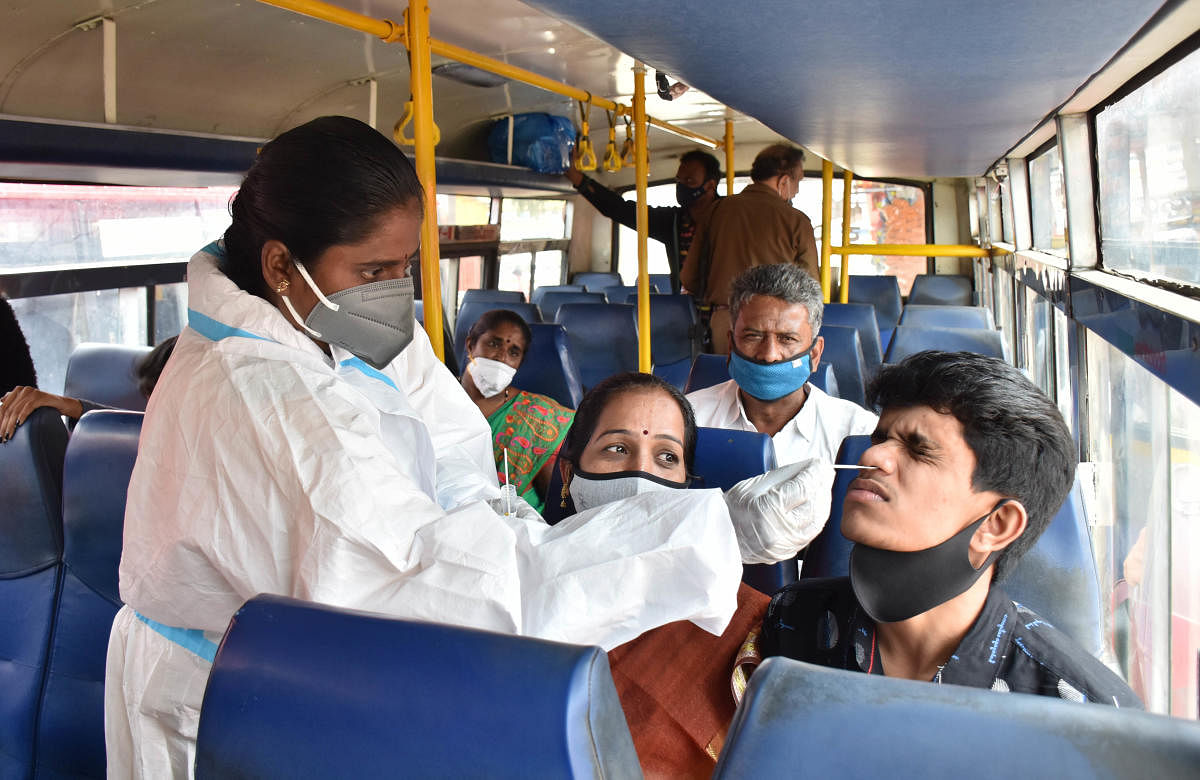
In line with predictions about an “age-shift” in the people contracting Covid-19, the proportion of cases of children being infected has risen in the last two weeks. However, experts stressed that this does not indicate that a third wave is imminent.
The consensus among experts advising the government is that the third wave will largely affect children due to increasing vaccination coverage among adults. A recent Karnataka government report on third wave preparations noted an increase in child case proportions in countries with a high vaccination rate: “In the United States, the proportion has increased from 14 per cent to 24 per cent as in May second week and changed to 19.8 per cent in the third week.”
This “age shift” increase towards teens and pre-teens became noticeable three weeks ago. From mid to late July, pre-teens in Bengaluru comprised an average of 3.8 per cent of daily cases. From July 25 to August 13, child cases have started to comprise 4.8 per cent, data from the BBMP War Room shows. Statewide, the proportion of pre-teens being infected has risen from 4.2 per cent to 4.95 per cent.
Read | AIIMS Director points out why children will be 'more susceptible' if third Covid wave strikes
In actual numbers, the state recorded 1,003 pre-teen cases of Covid-19 and 2,004 cases of teens (aged 10-19) over 14 days between 11 and 24 July. Comparatively, in the last 14 days, it has recorded 1,078 pre-teen cases and 2,539 teen cases. Experts said these figures are not enough to suggest a way to the third wave.
“Yes, about 45 per cent of the population is still susceptible to the virus. But as per trends established in the first and second waves suggest the proportion of susceptible population infected should be between 12 to 14 per cent. We are not yet at those levels,” explained paediatrician Dr G V Basavaraj, a member of the third wave committee.
Catalyst missing
Another reason for expert skepticism about the onset of the third wave is that the necessary catalyst to drive a new wave is missing - notably a new variant of the novel coronavirus. According to data from GISAID and CSIR-Institute of Genomics and Integrative Biology (IGIB) in New Delhi, nearly all genomic samples processed from paediatric cases have shown infection by baseline ‘Delta’ variant.
“All of the pediatric samples processed by Insacog and by the state are showing that children are being infected with the Delta variant of the novel coronavirus. If there is a new variant of the virus out there, our surveillance will catch it. So far, there has been nothing new,” said the noted virologist, Dr V Ravi, head of Karnataka’s Genomics Surveillance Committee.
He added that only the onset of a dangerous mutant such as the Lambda variant (otherwise known C.37), which has largely been found in the Americas, can potentially kick-start a third wave. The variant is known for being highly transmissible.
The US-based Scripps Research Translational Institute states that only six cases of “Lambda” have been found in India so far: three in Delhi, two in Uttarakhand and one in Madhya Pradesh.
As per official data, 52 per cent of the adult population in Karnataka has received at least one dose as of August 13, while 15 per cent have received both the doses.